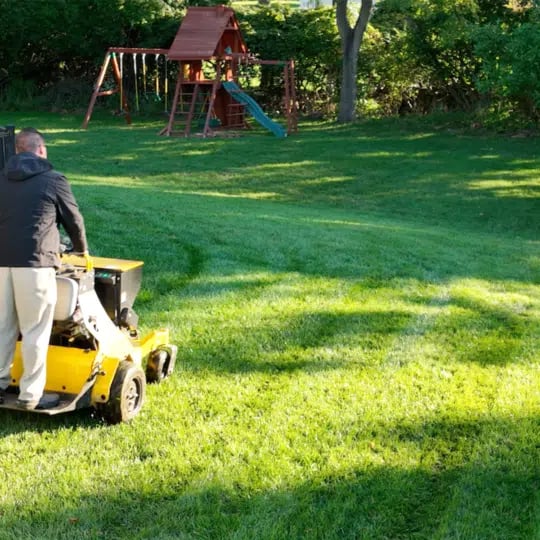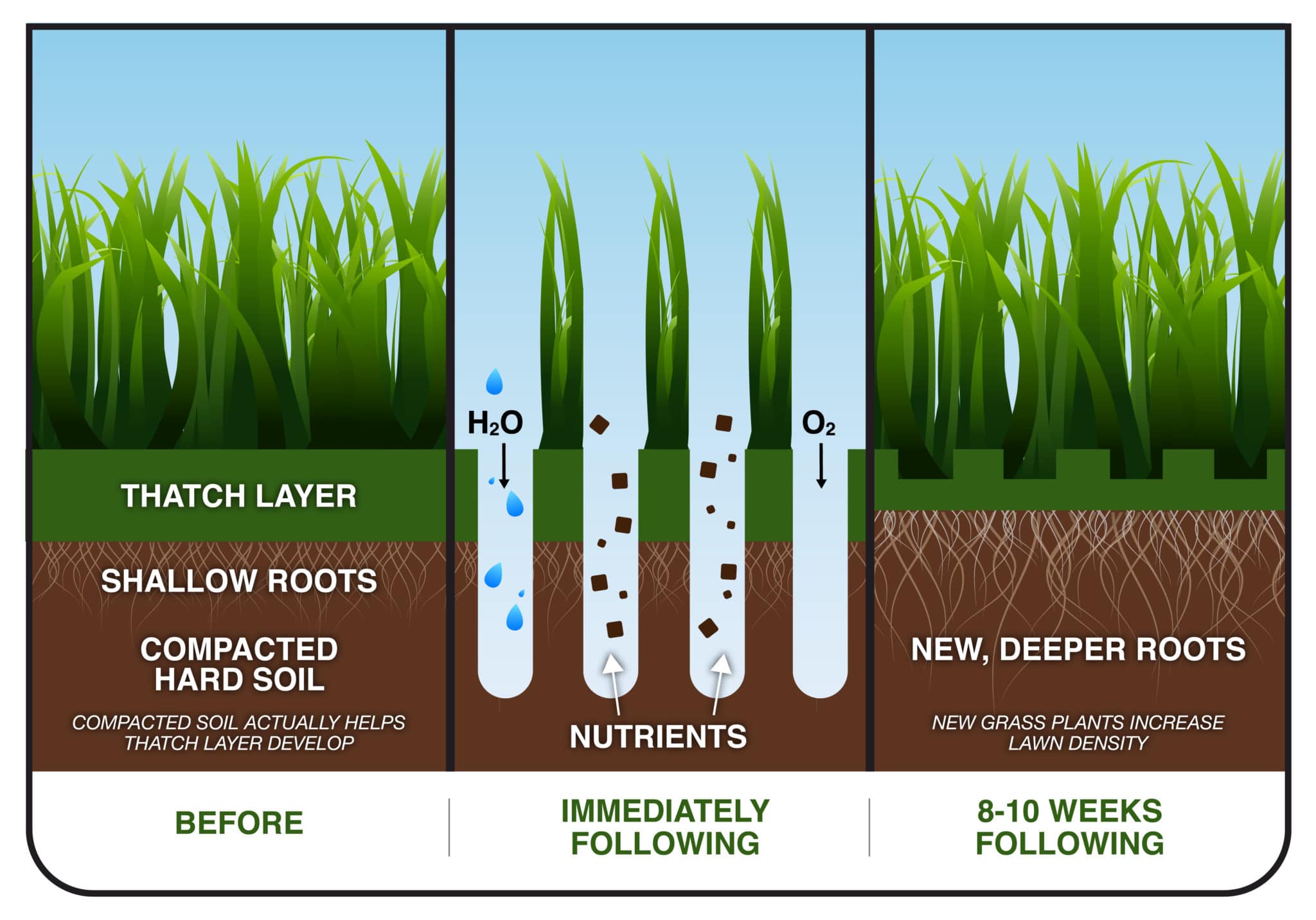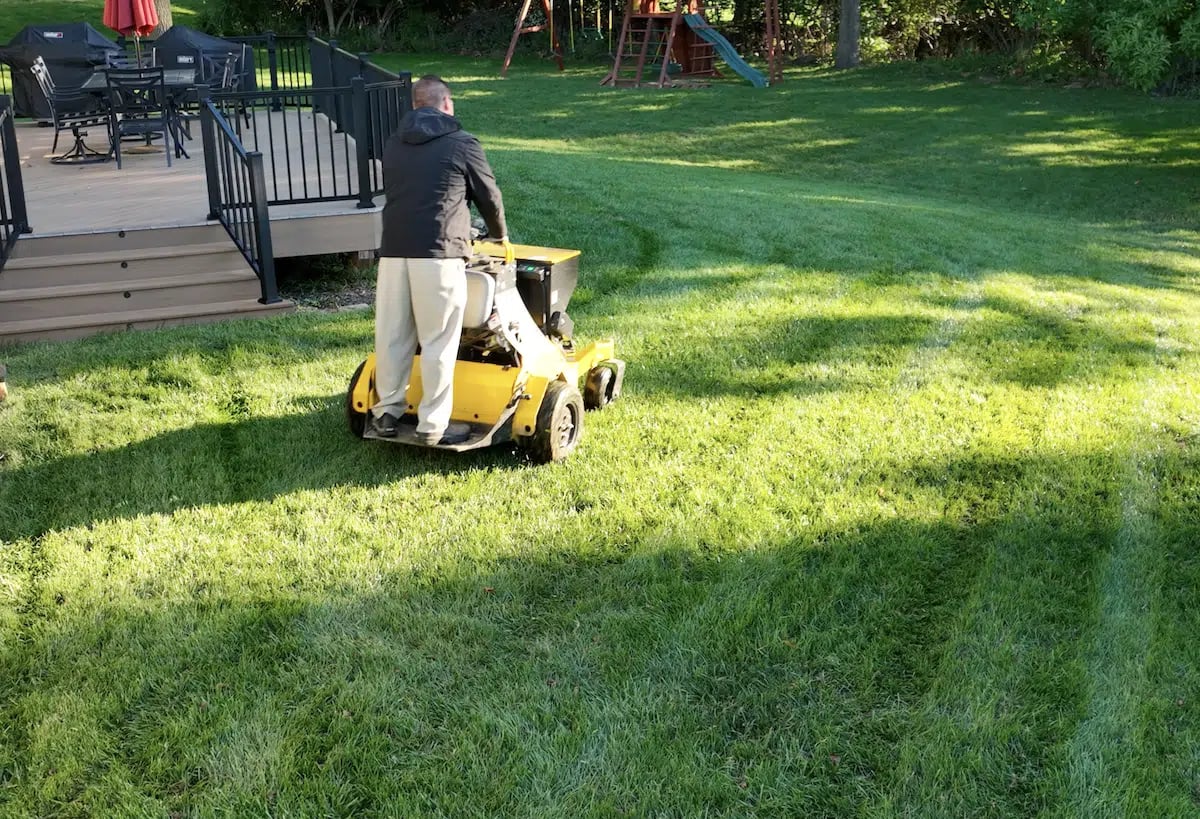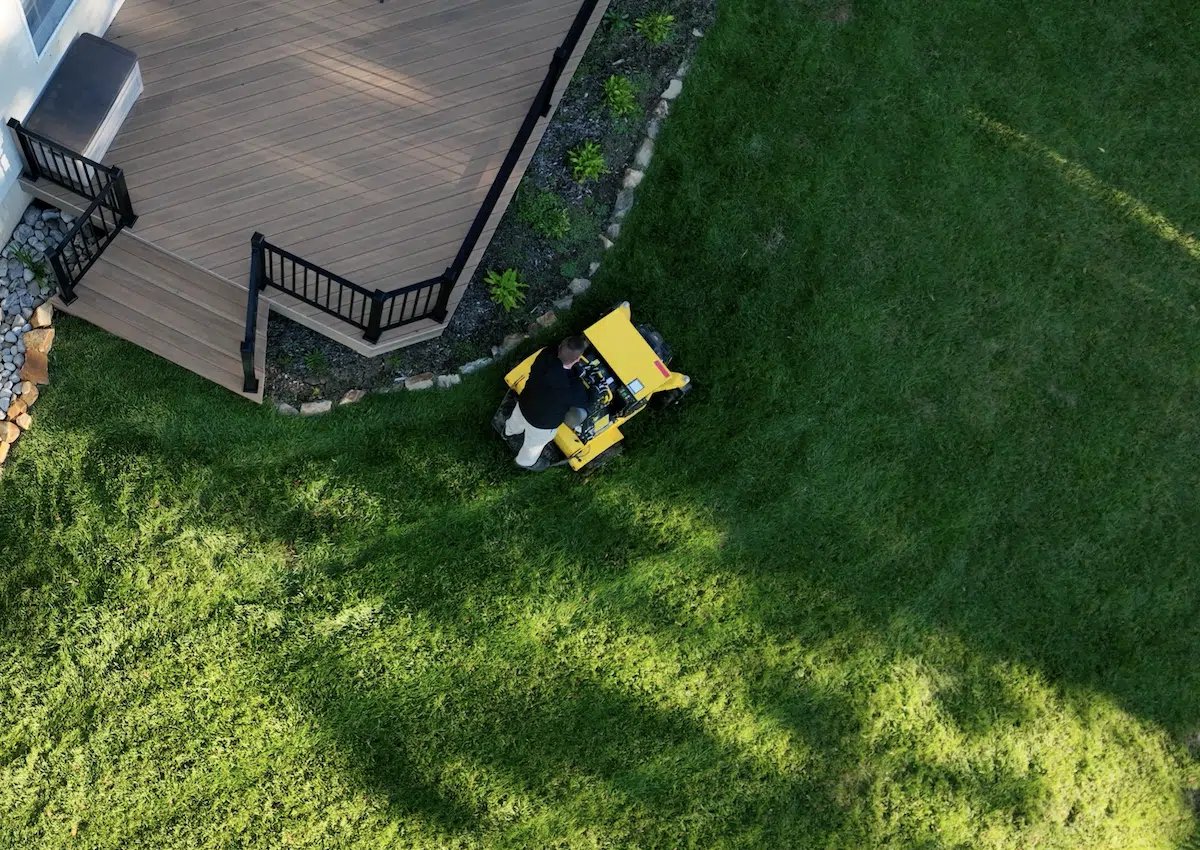What Are The Benefits of Lawn Aeration?

If you’ve been trying to figure out why your lawn isn’t looking as lush and green as it should, aerating may be the solution.
Lawn aeration is an important part of any lawn maintenance plan that can have a huge impact on the overall health overall appearance of your yard.
Table of Contents
- Why is Aeration Important?
- Benefits of Lawn Aeration
- How Often is Lawn Aeration Needed?
- Is Aeration Worth It?
- Why, How, and When to Aerate Your Lawn
Why is Aeration Important?
Aeration is allowing air, water, and nutrients to circulate through your lawn by creating small holes in the soil. The seeding that follows introduces new varieties of grass into the lawn. The seeds fall into the small holes, or plugs, in the soil and create the ideal environment for the new grass seeds to root.
With our stinger aerators machines, aeration and seeding services are done at the same time.

The Benefits of Lawn Aeration
Corrects Soil Compaction
Aeration alleviates soil compaction. This compaction happens in spots that are frequent paths for people or animals, or places that have been long-time homes to things like picnic tables and sports nets. When the soil isn’t compacted, the grass roots grow deeper, creating the ideal environment for a healthier lawn.
Takes Down Thatch
Thatch, in lawns, is the accumulation of dead turfgrass tissue which consists of roots, rhizomes and stems that accumulate faster than they break down. An excessive buildup of thatch, more than half an inch thick, can obstruct the flow of air, water, and nutrients to the soil.
As a result, it can create an environment that favors the growth of pests and diseases, reducing the overall health of the grass. It is important to regularly remove thatch to promote healthy lawn growth and prevent damage.
Prevents Patches
Even if your lawn looks healthy now, you might be looking at a patchy mess when the weather heats up again; cold, snowy winters aren’t good for your lawn. Aeration and seeding ensure new grass is ready to fill in any patchy spots.
Reduce Runoff & Puddles
Do you notice a puddle after it rains? Does one spot in your yard form a little ice skating rink when it’s extra cold? If soil is not properly aerated, the rainwater will not be able to adequately seep into the soil and will form puddles across your lawn. By aerating the soil, the rain and moisture will seep into the ground and not stay on top.
Provides Necessary Nutrients

The soil plugs that are left behind when aerating and seeding your lawn, also known as cores, can provide a boost of nutrients to the grass and seed. When they break down over time, they release important organic matter into the soil, which can improve its health and provide a more favorable environment for your lawn to thrive.
This simple and effective technique can go a long way in promoting the growth of a strong and healthy lawn.
Allows In Much More Air
Aerating, which involves creating holes in the soil, allows carbon dioxide to escape more efficiently from the ground. This exchange of gases not only ensures the efficient removal of harmful gases from the soil but also allows oxygen to enter the soil more freely, promoting a healthier soil system.
This, in turn, can lead to healthier, more lush lawn with stronger roots.
Less Work Later
Now that you’ve taken the time to prepare ahead of springtime, you’ll be the envy of your neighbors, with a lawn that requires considerably less effort to turn a healthy shade of green. Instead of spending weekends trying to repair the winter’s wear and tear, you can relish in the fact that you’ve set yourself up to save time and maintain an attractive yard all season long.
How Often is Lawn Aeration Needed?
How often you aerate will generally depend on the type of soil you have, and also on the climate where you live.
If your soil is heavy in clay, it will need aeration about once a year. If the soil is light and sandy, every other year will do the trick. If you live in a hot, dry place, or have had a particularly dry year, it may be a good idea to aerate twice a year.
Is Aeration Worth It?
Aeration loosens compacted soil. When soil is compacted, the granules are so tightly packed together making it hard for water, the roots of grass, and air to get in. Air, in particular, is essential because, without it, organisms like earthworms can’t thrive to recycle nutrients and keep the ground healthy. And while grass might not be able to thrive in compacted soil, weeds can.
Another reason to aerate: it makes lawn fertilization and reseeding more effective.
Here’s an inside look at how much aeration and seeding costs.
Why, How, and When to Aerate Your Lawn

Why Aerate Your Lawn
A heavily worn lawn can fall victim to soil compaction, which is when the soil gets so thick that the roots of grass cannot grow deeply. Aeration reduces compaction by pulling out plugs and provides a great hole for new seeds to thrive deep in the ground. This allows your lawn to grow thick for a luscious spring.
The healthier your grass, the better your lawn is able to fend off weeds and other lawn issues.
How to Aerate Your Lawn
DIYing your lawn aeration can be difficult.
If you are determined to do it yourself, there are aerating tools you can use that poke into the ground and create the aeration holes. You can either purchase the tools or rent them from a home improvement store.
If you have a small patch of grass, a manual aeration tool should be sufficient.
Either way, when you’re finished aerating and seeding, it’s important to follow best practices when it comes to watering.
When to Aerate Your Lawn
It can be hard to notice that your lawn is compacted. You can watch to see if rain puddles in one area of your lawn more than another. Whether or not you notice the compaction, it’s helpful to aerate your lawn in the fall. This is when many people choose to add more seed so their lawn grows back thick and healthy in the springtime.
Do You Need Help with Aeration and Seeding?
We’re here for you! At Green Lawn Fertilizing, we are experts at creating luscious, green lawns, and we provide year-round care—including aerating and seeding. All you’ll have to do is wait for your grass to grow. Give us a call today at 855-469-0692 for a free quote.
